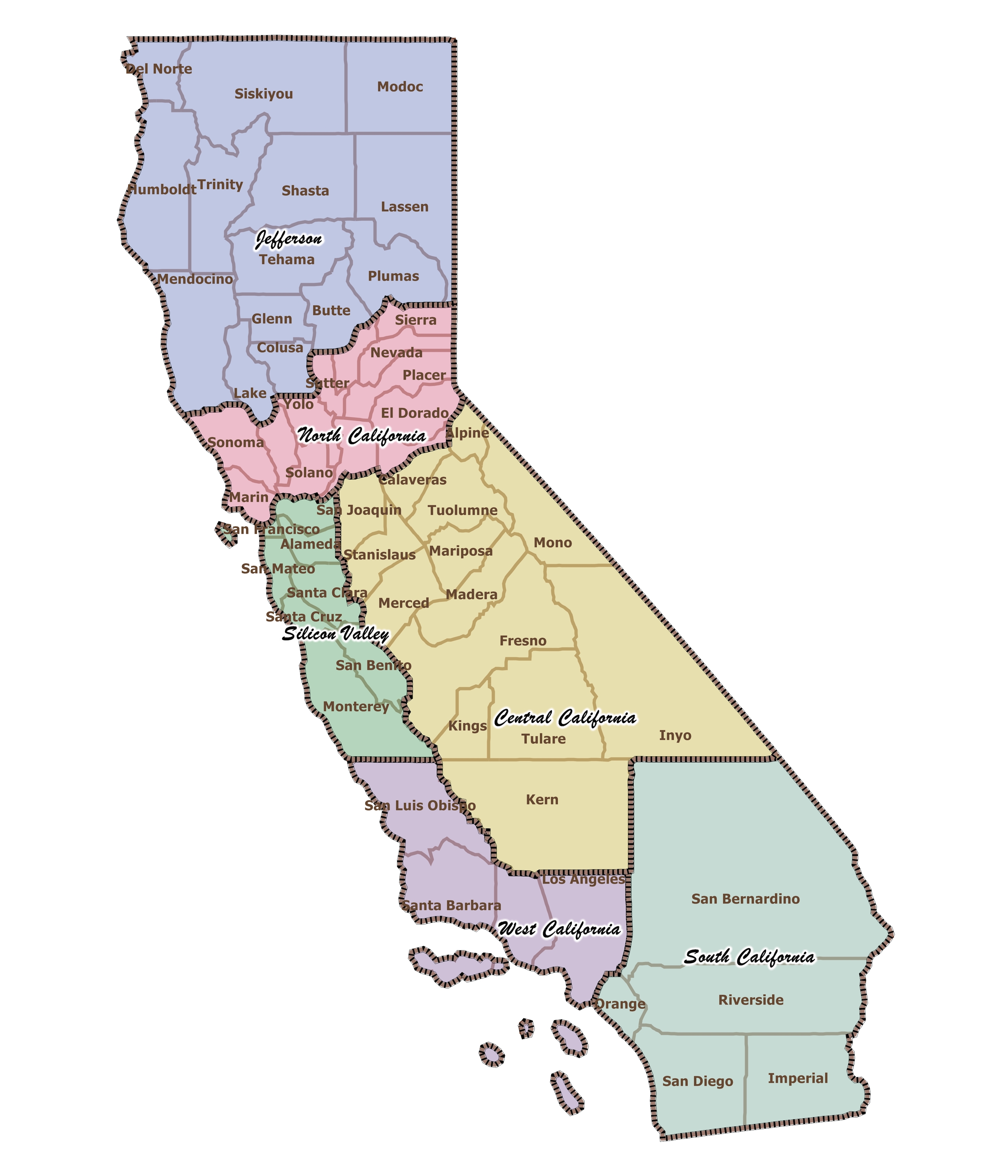Last month, California Secretary of State Debra Bowen approved for circulation (i.e. gathering roughly 800,000 signatures) venture capitalist Tim Draper’s proposed ballot initiative to split the Golden State into six new states. The proposed proposition has immediately garnered not only state and local attention, but also that of the national media.
But who would be the winners of such an amicable divorce?
Like many things California-centric, it’s not an easy question to answer, other than the obvious beneficiaries: flag-makers and Republicans looking to break up the Democrats’ 55 electoral-vote monopoly in the Golden State. However, by breaking down the new states based on their demographics, their economies, and their politics, we can examine winners on a granular basis.
Using county-level data pulled from Secretary of State’s office, the Legislative Analyst’s Office, Larry Sabato’s Center for Politics, Political Data, Inc., the California Department of Finance, and the California Employment Development Department, the following three “Sacramento Spotlights” will explore what the six news states – Jefferson, North California, Silicon Valley, Central California, West California, and South California – would look like.
First up: demographics.
Population
As of January 1, 2013, California had a population of approximately 38 million (a 0.8% increase from one year prior). As the chart shows, the six new California’s are nowhere near equal in terms of size of population – ranging from just under 1 million (northernmost Jefferson) to 11 million (suburban-sprawl South and West California). In terms of population growth, only one new state – Silicon Valley – would see growth north of 1%.
In terms of sheer size, West and South California are the clear winners. West California includes behemoth Los Angeles County, while South California includes the surrounding LA and San Diego commuter counties, including Orange, Riverside, and San Bernardino. However, if we instead look at population growth, Silicon Valley sits atop the new states. This may be more important than raw numbers as Silicon Valley is showing signs of continued growth, while West and South California are stagnating.
Race & Ethnicity
California is currently a majority-minority state with Latino, African-American, and Asian/Pacific groups making up 56% of the population. Of the new states, North California and Jefferson would become majority-white states, while West California and Central California would be almost majority Latino states.
As a result of separations, whites, Latinos, and Asians are all winners from the split. Whites become the dominate demographic group in North California, which is 17 points more white than the current California, and Jefferson – 35 points more white. On the other hand, Latinos in West and Central California immediately become the dominant force, even though their increases from the current state are not as extreme as whites in North California and Jefferson.
In Silicon Valley, Asians—who happen to be the fastest growing ethnic demographic in the current California—are effectively tied with Latinos. Just as California has natural north-south and west-east divides, its racial demographics are also largely consolidated into various areas. As such, this split would have the same effect as the Voting Rights Act does in creating majority-minority Congressional districts by packing races into particular borders.
Education and Earnings
Overall, California is a fairly educated state. Across its counties, on average, 59% of Californians have at least some level of college education. Naturally, the new states with the highest education levels would be Silicon Valley (65% some college or higher, 6 points higher than the current state), North California, which includes highly educated Marin County (65%, also 6 points higher than California), and West California.
One issue none of the states would need to worry about (at least, initially) is higher education infrastructure. All six new states would have at least two CSU campuses (Jefferson: the least with 2 and West California: the most with 7). All but Jefferson would have at least one UC campus (Central and North California with one and Silicon Valley having the most at 3). However, more than two-thirds of current University of California students would be considered out-of-state students on their current campus costing an additional $2.5 billion a year in total tuition (likely to increase when CSU students are factored in).
When it comes to earnings potential based on education level, Silicon Valley, West California and South California lead the pack (although, this is likely to be highly correlated with cost of living in these areas as well). On average, across the education spectrum, those in Silicon Valley make $5,000 more than the current California ($2,000 more in South California and about $1,700 more in West California).
Homeownership vs. Renting
California is an expensive place to own a home. Therefore, it is no surprise that approximately 44% of the housing units in California are rented rather than owned. The average median home price in California is almost $330,000, but there is a wide disparity between coastal and in-land counties. Moreover, average gross rent runs over $1,000 per month.
High renting levels suggest that a state’s population is not earning enough to afford the housing prices in the area. At the same time, localities prefer higher home prices over lower ones. However, having too high of prices isn’t good either – look at San Francisco where you’d need an annual income over $115,000 in order to purchase the median-priced home. For that reason, North and South California come out on top. In both new states, 60% or more of the total housing units are owned vs. rented and in both cases home prices run close to the current California average median price.
The fact that the demographics of these six new states would differ as much as they do from each other and also the current California just shows why proposals to split up the Golden State at least entertain some attention. Unlike other large states – namely, Texas – California is remarkably diverse. Such heterogeneity lends some credence to splitting up the state.
Next up: examining the economics of the six new California’s.
Follow Carson Bruno on Twitter: @CarsonJFBruno











